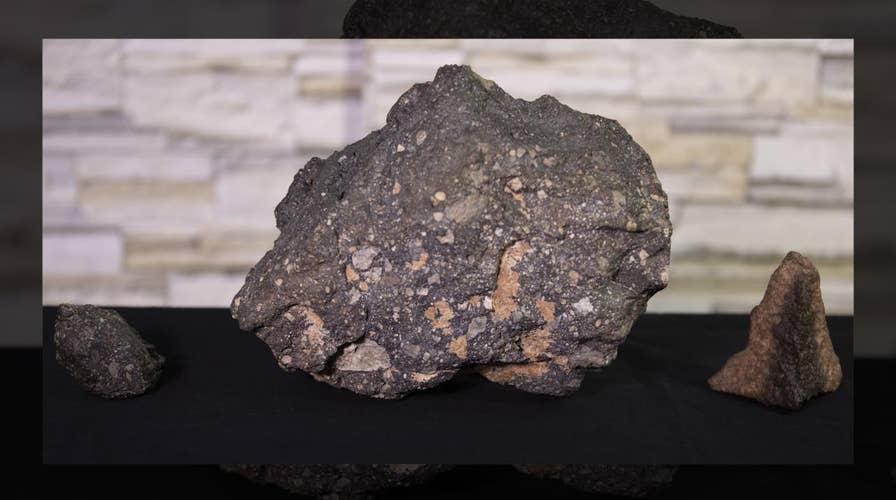Huge Moon rocks set to go on show at Maine Mineral and Gem Museum
The Maine Mineral and Gem Museum is set to showcase massive chunks of the Moon that have crashed into the Earth as meteorites.
The Maine Mineral and Gem Museum is set to showcase massive chunks of the Moon that have crashed into the Earth as meteorites.
“They are lunar meteorites, they are not pieces of the Moon that were brought back, much like the Apollo missions, but they actually fell to Earth,” Barbra Barrett, the Museum’s director, told Fox News. The Museum in Bethel, Maine, is set to open in late summer.
PISTOLS MADE FROM A 4.5 BILLION-YEAR-OLD METEORITE COULD FETCH $1.5 MILLION AT AUCTION
Ejected into space after asteroids struck the Moon, leaving craters on the lunar surface, the meteorites offer a fascinating glimpse into Earth’s natural satellite.
The soon-to-be-open Museum says that it will be home to the four largest pieces of the Moon on Earth and house more of the Moon than the 10 largest natural history museums in the world combined. In total, its collection will contain 40,000 gems and minerals and 6,000 meteorites. In addition to chunks of the Moon, there are fragments of Mars and a piece of the asteroid Vesta in the museum's collection.
WATCH STUNNING METEOR LIGHT UP THE NIGHT SKY IN AUSTRALIA
One Moon rock in the Museum’s collection, for example, weighs in at 15 kilos, or roughly 33 pounds. “The largest piece that they brought back during the Apollo missions was about 11 kilos,” Barrett told Fox News, noting that the museum also has larger rocks in its collection.
A small chunk of an asteroid or comet is also known as a meteoroid. When it enters Earth's atmosphere, it becomes a meteor or fireball or shooting star. The pieces of rock that hit the ground, valuable to collectors, are meteorites.
CLICK HERE TO GET THE FOX NEWS APP
July 20 marked the 50th anniversary of the historic Apollo 11 Moon landing.
Follow James Rogers on Twitter @jamesjrogers

